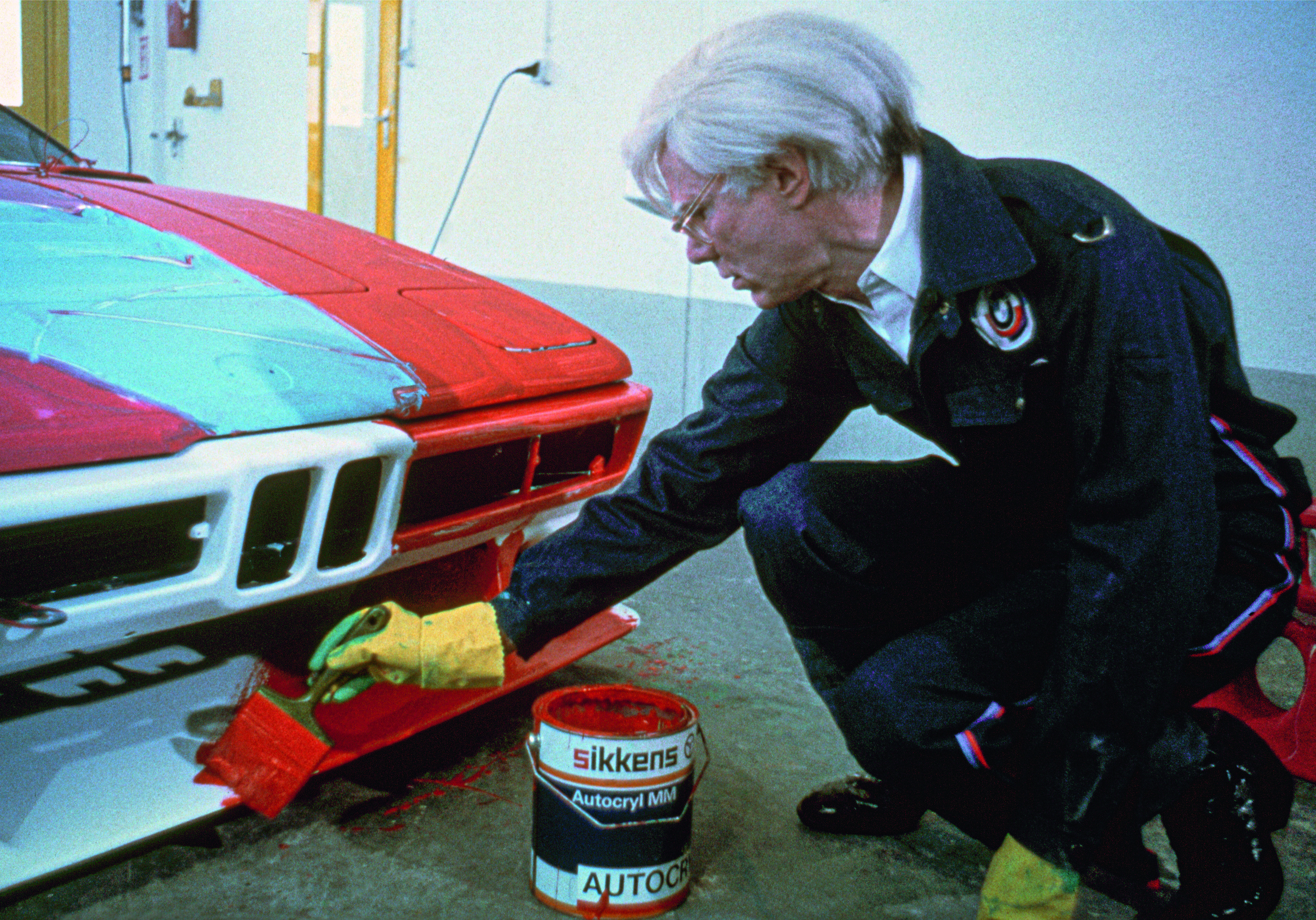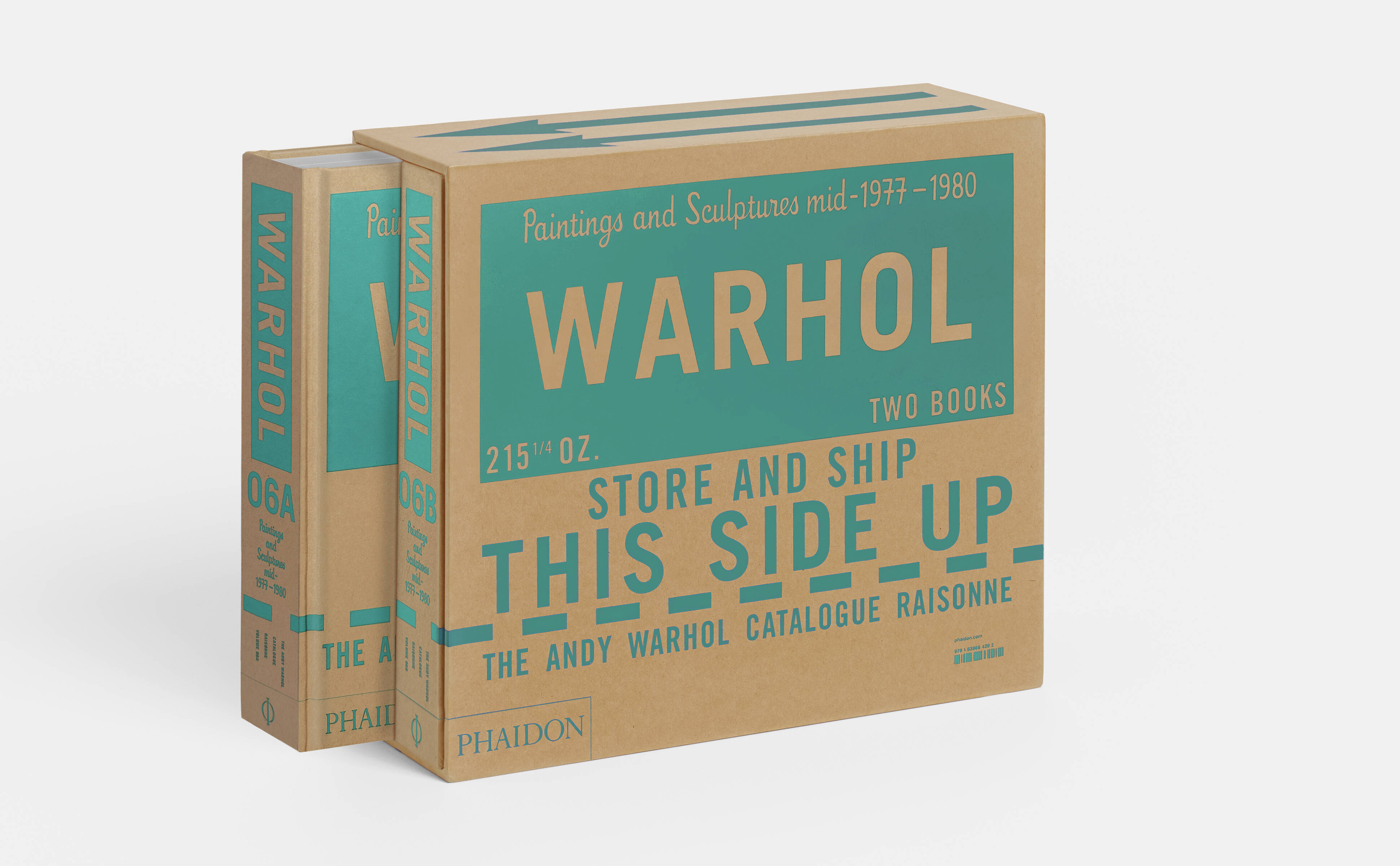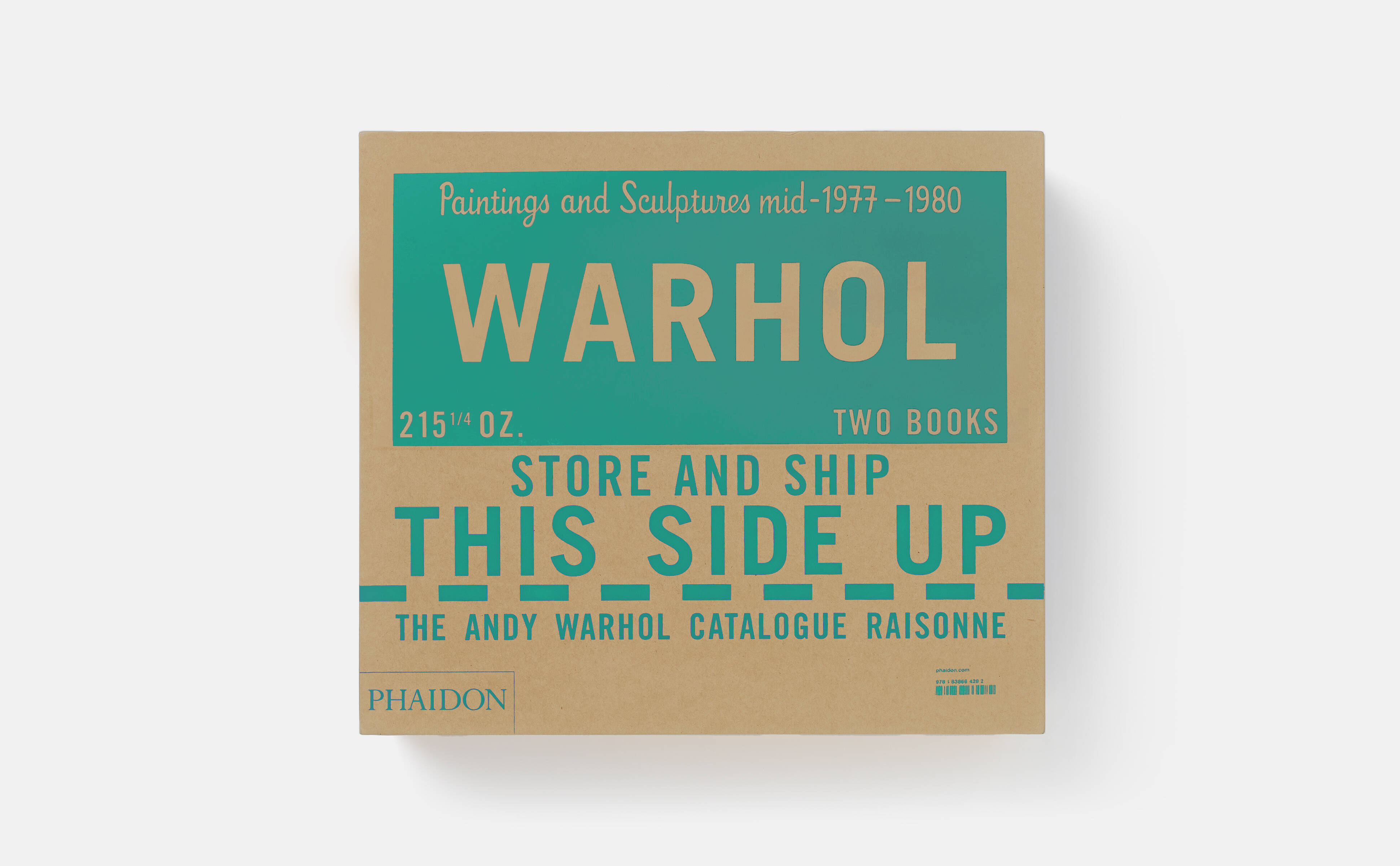
The story behind Andy Warhol's BMW Art Car
Our new Catalogue Raisonné traces the enormously inventive period of Warhol’s career from mid-1977 to 1980 - Andy's Art Car is just one of the many works discussed
Since its inception in 1975, The BMW Art Car has become one the highlights of the art world calendar, with artists as diverse as Jenny Holzer, Jeff Koons, John Baldessari, Olafur Eliasson, David Hockney, invited by the German automobile manufacturer to adorn a racing car (and occasionally a production car) with a visually creative motif.
Each artist is given the complete freedom to use the technique of their choice and put their mark on a car, and no two vehicles are alike. Hockney turned his car inside out, with the inner workings depicted on the body; Koons referenced the power of the car he adorned; and Holzer used phosphorescent lettering to reflect light in the colours of the BMW brand. This year the honour falls to Julie Mehretu to create a BMW Art Car.
None of the artists who have created 20 cars since 1975 received a fee, yet many of the cars have, in the years since, become literally priceless.
The project was conceived by Hervé Poulain, a Paris based race car driver and auctioneer of classic cars, and initiated in 1975 with the collaboration of Jochen Neerpasch, head of the Motorsport division of BMW in Munich. Alexander Calder was the first artist to be commissioned by the company, followed by Frank Stella in 1976 and Roy Lichtenstein in 1977. The story of Andy Warhol’s inclusion, in May 1979, is recounted in our forthcoming Andy Warhol Catalogue Raisonné.
At 802 pages and consisting of two hardcover books in a slipcase with over 740 paintings and sculptures, Volume 6 of The Andy Warhol Catalogue Raisonné - the highly praised, definitive reference to Andy Warhol’s extensive artistic production - covers an enormously inventive and productive period of Warhol’s career from mid-1977 to 1980.
Over the coming weeks we’ll be bringing you some of the many stories from it as we count down to its publication in July. Today's story focuses on Andy’s art car with text excerpted largely, but not exclusively, from the book.

Invited to participate in the project in April 1978, Warhol initially prepared five maquettes supplied by BMW. He spray-painted them black, covering both the front and rear windscreens, and rolled a pink floral design over them.
When Andy confided to his diaries that he hoped that BMW would “read meaning into” his black BMW “with pink roll-on flowers,” he was recognizing the subversive character of the floral design and its pink colour, the anti-machismo of his design for a race car.
There was, however, an obvious problem of functionality with Warhol’s maquettes: its ‘blackout’ windows would make the car impossible to drive. Instead of rejecting the maquettes outright, Poulain diplomatically proposed that Warhol paint a new model under development, the M1.
Warhol travelled to Germany in May 1979 and painted the car, assisted by his printer Rupert Jasen Smith, on May 17 in the paint shop of Walter Maurer in Hebertshausen, north of Munich. Maurer supplied the water-based dispersion paints Warhol used, selecting the colors according to a maquette that Warhol had previously painted in New York.
“I attempted to show speed as a visual image. When an automobile is really traveling fast, all the lines and colors are transformed into a blur,” Warhol said in explanation of his work.
Warhol exemplified this speed in his execution of the work. According to Maurer, it took the artist “around twenty-eight minutes” to paint the car, while a video crew filmed him. Warhol painted two additional spoilers in case the original was damaged during a race. After the car was painted, Maurer coated it with several layers of transparent sealer that took two days to dry. The completed car was displayed at the BMW headquarters in Munich on May 22, 1979, and driven in the endurance race, 24 Heures du Mans, the following month (June 9–10).
Warhol’s speed in painting the car was matched by its performance. The mid-engined car finished a creditable sixth place finish and second overall in its category, though Warhol did not attend the race to see such visual poetry in motion.
However, the Catalogue Raisonné reveals that while in Germany Warhol attended the opening of Indians, Porträts, Torsos, at Galerie Denise René Hans Mayer, Dusseldorf. And he also met Joseph Beuys on May 18 and visited Wieskirche, Linderhof Palace, and Neuschwanstein in Bavaria, the following day.

The paintings and sculptures reproduced in The Andy Warhol Catalogue Raisonné: Paintings and Sculptures mid-1977–1980 (Volume 6) are accompanied by over 700 images of source materials, the artist’s Polaroids, contact sheets, and archival photographs of gallery and museum installations, as well as related works.
The editors of the catalogue raisonné and a team of researchers scoured the secondary literature, examined thousands of works of art, reviewed the artist’s archives and diary entries, and interviewed assistants, colleagues, portrait sitters, and friends to elucidate Warhol’s materials, techniques, and artistic process.
Get The Andy Warhol Catalogue Raisonné: Paintings and Sculptures mid-1977–1980 (Volume 6) here.